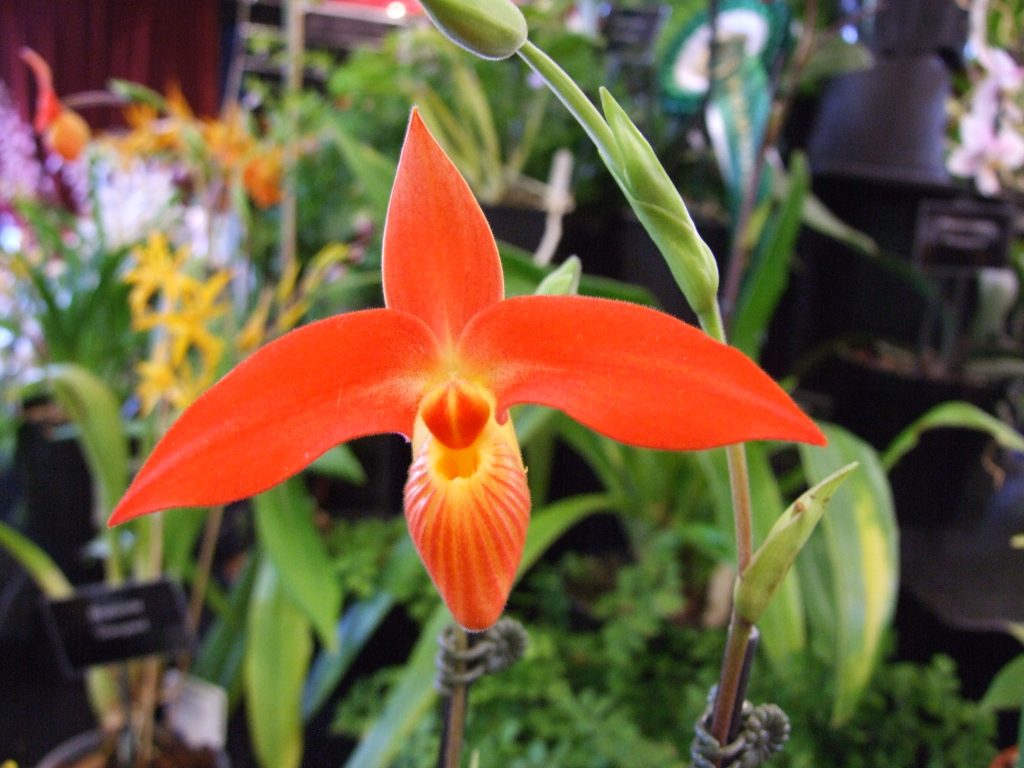Sheffield & District Orchid Society

These orchids come mostly from Ecuador and Peru live in a wide range of habitats. This means that they are subjected to varying light, temperatures and humidity and therefore these notes only provide a general guide to cultivation.
Watering: All of these plants like their “Feet Wet” and should be kept moist at all times. As a guide you should water every two or three days in summer and once a week in winter, with something in between for Spring and Autumn. Rain, or reverse osmosis water is preferred with a pH between 6.2 and 6.8 if possible. The only exception is kovachii which seems to like
harder water at a pH of 7.0+. If you are brave you can stand the plants in trays of water during the summer, which is a death warrant to most other orchids.
Fertiliser: Like most orchids they do require feeding to get good growth, but generally you should not exceed 300 ppm (~468 µS/cm) for species and hybrids. The exception to this is any plant of longifolium and its hybrids which will take 500 ppm (~780 µS/cm) without burning the roots. A good balanced feed works well as too much nitrogen makes for soft growth in many of the species.
Temperatures: Success can be achieved in a wide range of temperatures, but most Phragmipediums like a minimum night temperature of 13/15°C, with a daytime rise of 10°C if possible.
Humidity: A range of between 50% to 70% relative humidity should be maintained. More than this can cause significant problems with fungal disease in new growths and buds rotting away. Less than this can cause issues with bud drop and red spider mite.
Light: Moderate levels seem to work well for these plants. Around 1500 to 2500 foot candles (16000 – 27000 lux) provides strong growth; it is essential to look at your plants to check if the leaf colour is a mid green and move as necessary.
Repotting: Because of the frequency of watering they require regular repotting as the compost breaks down or becomes tainted with the build-up of salts. Annual inspection is recommended, repotting into a moisture retentive but free draining compost. Success is achieved with mixes based on bark or rockwool cubes and plastic pots to retain the moisture.